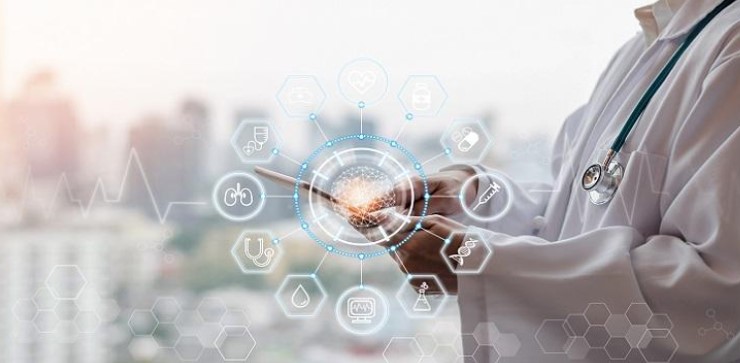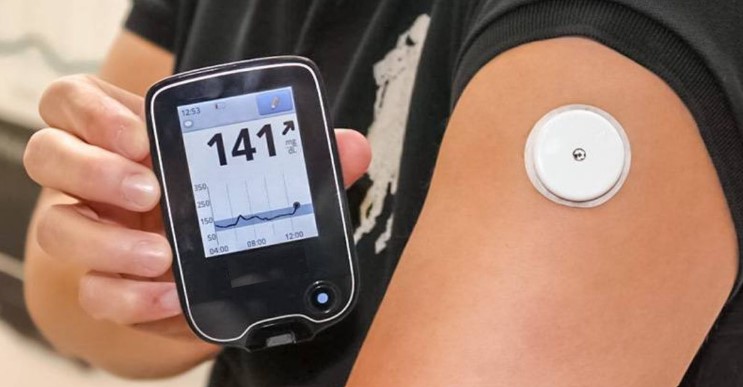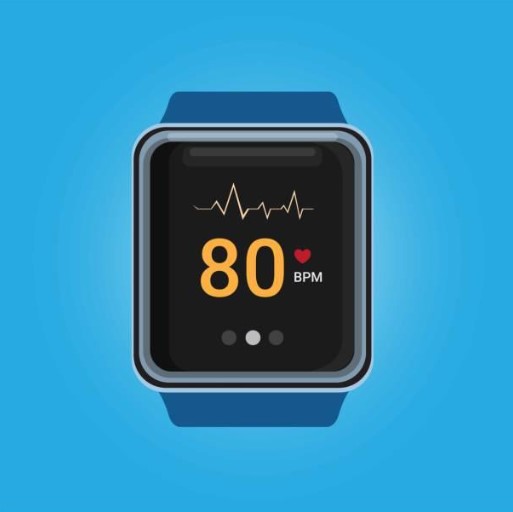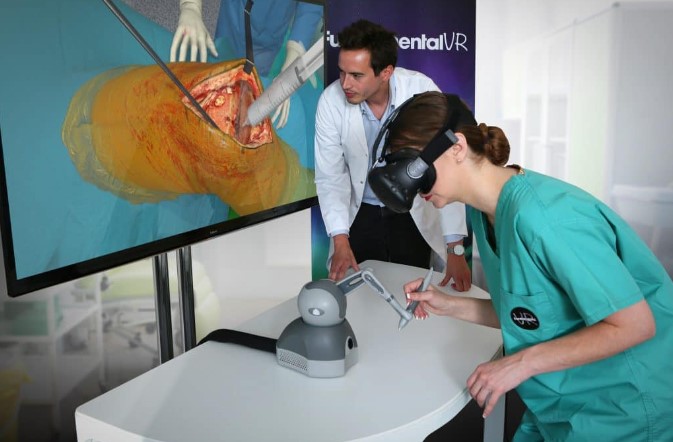What is IoMT?
We all know what the Internet of Things (IoT) means. No? Well, imagine a rural environment where you can meet all kinds of animals and plants as part of an ecosystem. Imagine this ecosystem now, but in an urban environment and instead of living beings, you have electronic devices that can communicate with each other and exchange data by being connected to a local network.
Thirsty?
Having a network of smart devices as a concept started in 1982, when a soft drink vending machine was modified in a way that it could report its inventory and whether the last loaded drinks were cold or not. Three years later, the concept of IoT and the term itself appeared. It included the ‘integration of people, processes and technology with connectable devices and sensors to allow remote monitoring, status, manipulation, and evaluation of trends of such devices.’ Fast forward to 2008, when IoT became a reality. Today, the IoT is dominating our world by participating in an extensive set of applications, one of which is the field of medicine. What happens when IoT is applied in medicine? It becomes the all-mighty Internet of Medical Things (IoMT), and boy is it powerful!

Doctor, Doctor!
In each hospital, many different cases require different solutions or treatments. Some patients can be released on the day of admission, while others must remain hospitalised or monitored around the clock. Focussing on the latter, let us examine different cases.
Can I Crash Here for the Night?
A patient might be able to stay in a hospital day after day (not that they want to), but the same does not apply to doctors. Physicians need to care for hundreds of patients daily. However, the difficulty is that they can only be in one place at a time. Apart from that, they need to spend time with their loved ones, or even alone, just to cool down. However, what happens in an emergency or when a patient needs immediate care? IoMT has made it possible! Through telemedicine systems, remote patient monitoring has become a reality. All patient vitals are sent to the hospital’s local server, right? The data can be transmitted instantly and analysed within seconds thanks to edge computing infrastructure. Physicians can access all types of patient information at all times by having their smart devices remotely connected to the server. So, in an emergency, all they need to do is keep an eye (or an ear) on the notifications, and they can look at the patient’s status in seconds and even adjust the medication remotely!

Now, let’s not be dramatic. Sometimes, all patients need is advice or comfort, in or out of the hospital. A web camera connected to the hospital’s local network is enough for them to contact their doctor directly, making the doctor-patient interaction almost as if the doctor were right there next to them! Not to mention that doctors can monitor not only their patients’ vitals but also their looks. How? With Computer Vision (CV) Don’t get us wrong; we don’t necessarily mean doctors would check if a patient is pale or has slept enough. Surely these are important, but CV can do much more than that. CV can successfully identify a patient’s mentality and psychological state, which can then be taken into account by the physicians to minimise the time a patient needs to be admitted. Taking it to the next level, how about hospitals employing the best of the best? We have heard of cases of people travelling abroad to be cured by a specialised physician. What’s more, these trips are rarely a one-time thing. People could benefit from telemedicine and IoMT by directly consulting with the desired doctor anywhere in the world. In this way, the doctor and the hospital can keep an archive of the recordings and patient information, and the patients can be at their desired doctor from the comfort of their homes.
Let’s put a pause here. There’s no way such an attempt won’t have any drawbacks. It has been noticed that there is generally a communication gap between doctors and patients, which is even wider when they don’t often communicate. Natural Language Processing (NLP) can save the day. NLP is the Generative AI technology that all AI assistants use to help you do your homework and write your emails. With proper training, NLPs can perform outstandingly in terms of translation, even among individuals who speak the same language. By locating keywords, NLPs can extract all the necessary information from both ends and ensure no misunderstandings between what the physician or the patient says, means, hears and understands. All it would take would be an input. Then, the Generative AI would take care of the rest by generating text or audio so that each end can understand. Problem solved!
So, I Need to Do This HOW OFTEN?!
So far, you have an idea of the applications of IoMT and its potential for acute cases. However, there are times when a case might take more than just a couple of weeks. Chronic diseases or conditions usually last 3 or more months and may worsen over time. They tend to occur in older adults, and although they can be controlled, they usually cannot be cured. Some examples include cancer, heart disease, and diabetes. In the old days, people with such conditions needed to see the doctor regularly. As technology advanced, devices and kits were developed to track patient tumour markers, monitor their heart in real time, and control their blood glucose levels. In all of the above cases, data registration is a necessity. And even though it can be done manually, is there anyone who wants to do things the hard way? GPU acceleration implemented in monitoring devices can solve this problem by empowering AI algorithms to do the work for us better. We need to remember that medical data are not simple and can include medical images (portable ultrasonography devices, for example), apart from numbers. Believe us when we say that annotating medical images for abnormalities can be a boring task, not to mention that a user interface (usually a screen) would be necessary. And besides, the eyes surely will get tired after a while and mistakes will be made. That’s when you need a pair of eyes that never get tired. If you still haven’t figured out what we mean, this would be the usual suspect, CV. One of its many applications is making medical image annotations, as it can identify even the tiniest of abnormalities. The only thing better than that is when this happens on the go! But regardless of whether you prefer to do things manually or automatically, the data will be sent over the cloud to the hospital server, to which the doctor has access at all times. Following the protocols that were mentioned earlier, it is guaranteed that effort will be minimised and that the outcome will be the best possible!

Look What I Got!
Whether you are a fan of gadgets and technology in general or not, your eye has caught smart watches. You might find them a waste of time (pun intended), but you have to admit that they have some cool features, some of which can be used for medical purposes. Although they cannot be treated as purely medical because they are not FDA-approved, features such as heart monitoring, activity tracking, and sleep monitoring are not beneficial to have on your wrist.

It is advisable to check their accuracy with an approved medical device verified and purely intended for medical purposes, but just imagine! Real-time monitoring would surely be convenient for someone overweight and advised to walk 10000 steps each to keep track of their effort. Someone with sleep disorders could check his sleep quality and time intervals between deep and light sleep. Not to mention people who need to be careful not to stress due to heart disease. Focussing on the latter, some smart watches can even send an SOS notification to a predetermined list of contacts when something bad happens, such as an extreme number of pulses or even a car crash! But let’s get back to data. One thing needs to be kept in mind: smart watches are a vault of vital evidence. All your physical activity, heart monitoring and sleep information are stored there. To give you stats, the data needs to be analysed, right? Now, this can happen either on the phone with which the smart watch is paired or the watch itself. How can such a big amount of data be processed in such a tiny device? The answer is through Edge Computing. Smart watch technology has made leaps in the last 5 years, making smart watches a powerhouse of hardware, and data is analysed as it is being recorded. Simply put, you have Edge Computing around your wrist!
The Day After Tomorrow
As you have seen so far, telemedicine can have multiple aspects. It can be as strictly medical as commercial, but it is not just a gimmick. One can only imagine the future of this technology with such a wide range of applications. Studies have shown that IoMT is already on its way to the next level with the development of intelligent ingestible pills. This brand-new kind of pill is, simply put, your typical drug with a digital twist. It is designed to verify that the organism absorbs the medication through an ingestible sensor embedded in the pill. Before the sensor is fully ingested, it will transmit data to a remote server that will be stored in the future.

However, the most mind-blowing scenario we could come up with is the concept of distance operations and medical examinations using Augmented Reality (AR) or Virtual Reality (VR). There are so many commercial products out there that keep improving, but they are mostly limited to gaming and computer applications. Imagine the potential that such devices would bring when training new physicians. For example, we all know how the discipline of anatomy is delivered, which is fairly unpleasant. Yet, familiarity with the body is essential for preparing the doctors in the operating room. A 2009 study showed that almost 12% of students feel such discomfort during their stay in an operating theatre that they fainted (The Guardian, 2018)! As you probably imagine, seeing someone faint won’t benefit the rest of the operation team. Therefore, don’t you agree that such training, at least in the first stages, would be better using AR or VR? Some of us have better tolerance than others in such scenarios, and what better than to train newbies in a controlled environment that would also feel safe for them? You know what they say. “It’s not real, it’s just a movie”.

How about the practical realisation of medical exams? Med students must pass very demanding tests, and they are evaluated as much in theoretical knowledge as in practice. As you imagine, the theoretical exam takes place in a classroom or an auditorium. However the practical part is 9/10 delivered using real patients inside the hospital. Of course, there is a supervisor with them, but why not make things more interesting? A radical way to examine the candidates for the doctor’s licence could easily be delivered using VR. A custom medical case that would be tailored for the needs of the examination, without the risk of an actual error, nor the need for a supervisor! The young physicians would need to treat the simulation like a real scenario they are expected to address independently.
Taking things further, many areas on Earth do not have enough access to medicine and healthcare. Physicians could access parts cut off from the rest of the world, viewing these areas with a VR headset. Imagine how things would change by having machines operate in isolated areas. The entire healthcare system in such parts of the world could be transformed with remotely controlled devices that perform operations with appropriate Edge Computing infrastructure to support GPU-accelerated CV applications.
Summing Up
IoMT can revolutionise the way medicine is structured. It can bring people closer, reestablish how humans and machines interact, and even read you ‘read’ you inside out. In a nutshell, it can truly make things that seem like sci-fi happen.
What We Offer
At TechnoLynx, we proudly possess the skills and know-how to optimise your IoMT infrastructure and operations. Our team specialises in delivering custom, innovative tech solutions, custom tailored to your needs. We understand the benefits of IoMT in stationary and portable equipment. We are committed to ensuring safety in human-machine interactions, surpassing hurdles, and addressing any ethical considerations you might have.
Our software solutions are precise and designed to empower AI-driven algorithms in various industries. We like to innovate; we are driven to adapt and overcome any difficulties to the ever-evolving IoMT landscape. We provide cutting-edge solutions that increase efficiency, accuracy, and productivity. Make sure to contact us if you have any questions!
List of references
- admin (2020) ‘Coca-Cola Vending Machine’, Vertical Innovations Ltd., 13 April (Accessed: 19 February 2024).
- How AI Helps Physicians Improve Telehealth Patient Care in Real-Time | telemedicine.arizona.edu (no date) (Accessed: 25 January 2024).
- Modular Prosthetic Limb - ROBOTS: Your Guide to the World of Robotics (no date) (Accessed: 3 February 2024).
- Pros & Cons of Continuous Glucose Monitors for Young Children with Type 1 Diabetes (2019) UMass Chan Medical School.
- Red Light Therapy Science (no date) Kineon (Accessed: 25 January 2024).
- ‘Smart pills could “dumb down” medical care - EPR’ (no date) European Pharmaceutical Review.
- Smartwatch With Heart Beat Rate Check App In Realistic Illustration Vector In Blue Background Stock Illustration - Download Image Now - iStock (no date).
- ‘St George’s University Introduces VR Surgical Training’ (2019) vStream Digital Media, 28 May (Accessed: 12 March 2024)
- The Guardian (2018) ‘I was a doctor prone to fainting. This is how I got over it’, 16 January (Accessed: 12 March 2024).












